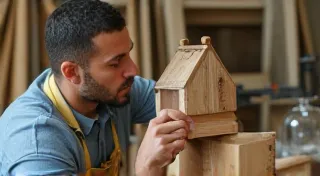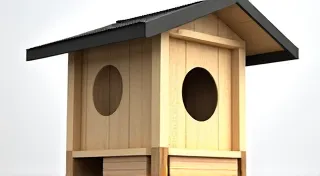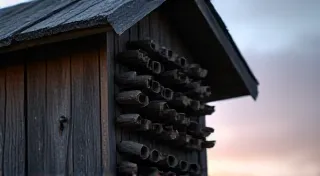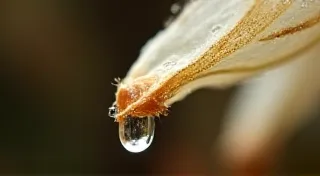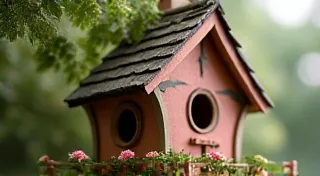Design a Robin Nesting Platform: Open-Air Bird Housing
Robins prefer open nesting areas. While we often think of enclosed bird houses, robins are a bit different. They favor the security of a sheltered spot but prefer an open design, allowing them to easily survey their surroundings and take flight. Building a robin nesting platform is a rewarding woodworking project that provides a safe and appealing habitat for these beautiful birds. This guide will walk you through building a simple, effective platform, ideal for your backyard.
Why a Platform Instead of a Traditional Birdhouse?
Robins are ground nesters or prefer ledges and surfaces rather than enclosed cavities. Traditional birdhouses often go unused by robins. A platform provides the open space they desire while still offering protection from the elements and predators. It's a more natural nesting environment that's much more likely to be accepted by these birds. Understanding the specific needs of different bird species is crucial for successful birdhouse design. For instance, while robins prefer platforms, wrens might thrive in a smaller, more traditional structure; check out Build a Wren House: Small Space, Big Impact for details.
Materials You’ll Need
- One untreated wooden board (pine, cedar, or redwood are good choices) – approximately 1” thick, 6” wide, and 6 feet long.
- Wood screws (1 1/4” or 1 1/2” exterior grade)
- Wood glue (exterior grade)
- Drill with drill bits
- Saw (hand saw or power saw)
- Measuring tape
- Pencil
- Sandpaper
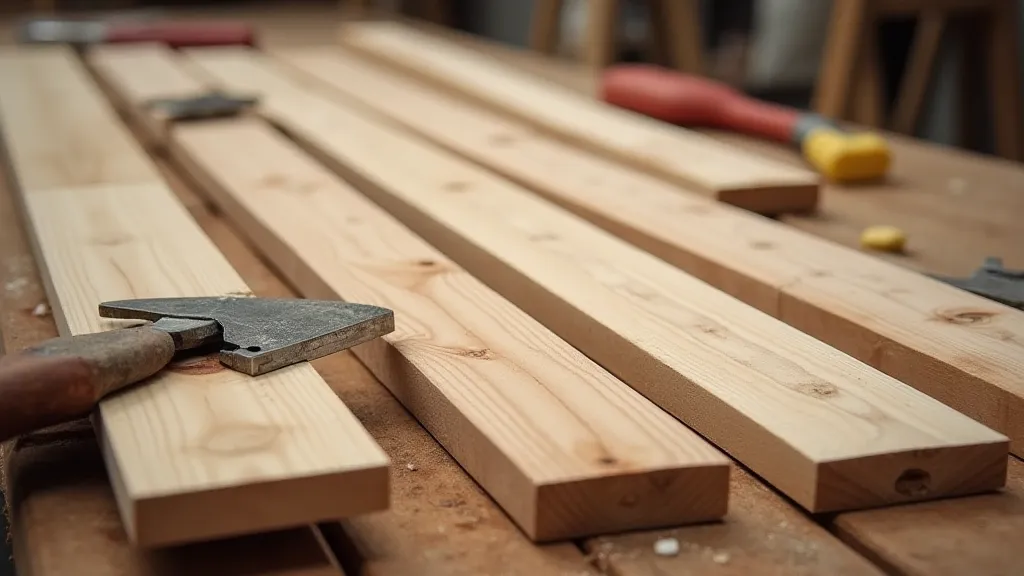
Cutting the Pieces
Follow these dimensions for your platform pieces. These are approximate and can be adjusted slightly depending on the desired size. It’s important to consider overall dimensions when planning your birdhouse projects. For a comprehensive guide to recommended sizes for different species, check out Bird House Dimensions: Ideal Sizes for Different Species. Proper sizing isn't just about dimensions, it's also about ensuring the structure is durable and provides adequate shelter.
- Base: 8" x 8"
- Back: 8" wide x 10" high
- Sides (2 pieces): 8" wide (at the bottom) tapering to 6" wide (at the top) x 7" high. Cutting this taper requires a little extra care.
- Front: 6" wide x 5" high
Assembly Instructions
- Attach the Sides to the Base: Using wood glue and screws, attach the side pieces to the base. Make sure the tapered ends face upwards.
- Attach the Back: Glue and screw the back piece to the assembled base and sides. Ensure it's centered.
- Attach the Front: Glue and screw the front piece to the base and sides.
- Sanding: Sand all edges and surfaces to remove splinters and create a smooth finish. This helps protect the birds.
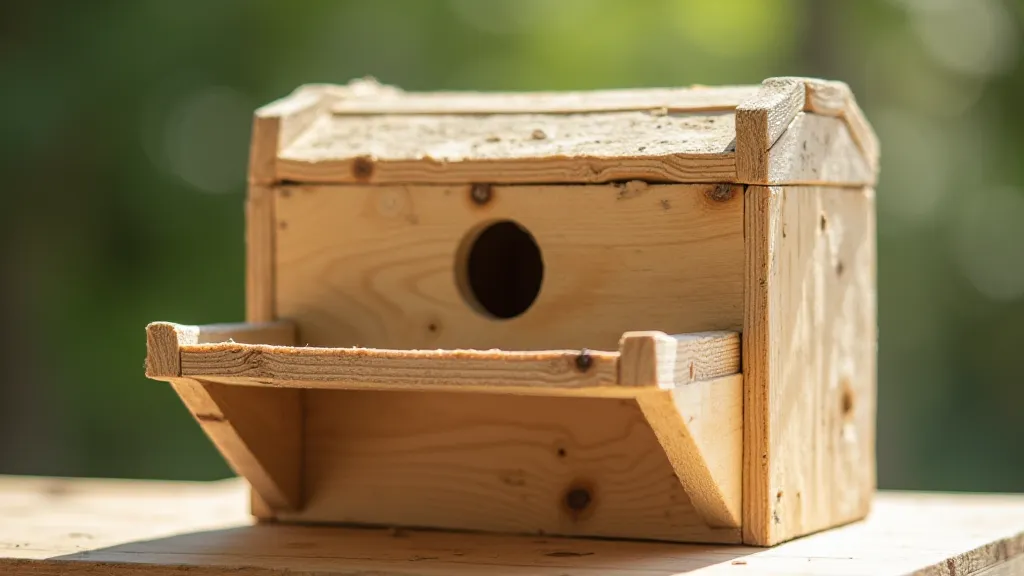
Placement and Mounting
Robins prefer their nesting sites to be somewhat sheltered and out of direct sunlight. Ideal placement is under the eaves of a house, on a porch railing, or on a tree branch approximately 6-15 feet off the ground. The platform should be securely mounted to prevent it from falling. Choosing the right location not only affects the birds' comfort but also helps protect them from predators and the elements. Attracting birds to your backyard often involves a bit of planning when it comes to placement. Considering the overall ecosystem, however, can do even more to welcome wildlife. If you are looking for other ways to attract beneficial creatures, consider Building a Bat House: A Simple Project for Beneficial Wildlife to assist with insect control.
Mounting Options:
- Screws through the Back: Attach the platform directly to a wall or railing using screws through the back piece.
- Wire or Rope: Drill small holes in the back and sides, and use sturdy wire or rope to hang the platform from a tree branch.
Important Considerations
Creating a welcoming habitat for birds is about more than just providing shelter; it's about providing a safe and healthy environment. Careful material selection and thoughtful placement are key to success. Consider the impact of your choices and remember that even small details can make a big difference. Beyond just designing a structure, consider how to foster a truly balanced ecosystem that supports all of its inhabitants.
- Untreated Wood: Always use untreated wood. Chemical treatments can be harmful to birds. The natural oils in cedar and redwood, for example, provide some protection against the elements, making them excellent choices for outdoor birdhouses.
- No Perch: Do not add a perch! Perches allow predators easier access to the nest. Robins don’t need a perch; they can easily land directly on the platform.
- Cleaning: While robins generally reuse nests, periodic cleaning (in late fall or winter) can help prevent parasites and disease. This helps maintain a healthy environment for the birds.
Creating a bird-friendly garden is a holistic approach. It’s not enough to just provide a nesting platform; you need to consider the entire food chain and the overall environment. This includes providing a reliable source of water, which is frequently overlooked but essential for attracting and sustaining bird populations. Native plants are incredibly valuable because they offer food and shelter that birds have evolved to depend on. Providing a variety of habitats—open areas, sheltered spots—is essential to draw in different species and create a thriving ecosystem. Understanding these nuances allows for a more successful and fulfilling experience in attracting wildlife to your yard.
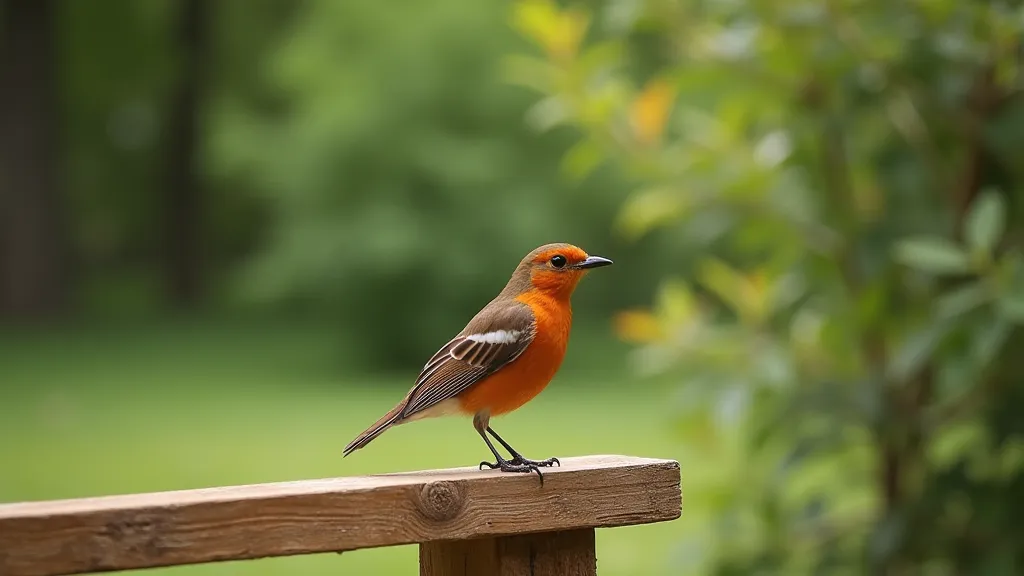
Expanding Your Bird-Friendly Garden
Building a robin nesting platform is a fantastic first step, but creating a truly bird-friendly garden involves a broader perspective. Consider the entire ecosystem – the plants, the insects, the water sources – and how they all interact. Providing a reliable source of water is often overlooked, but it's crucial for attracting and sustaining bird populations. Native plants are particularly valuable, as they provide food and shelter that birds have evolved to rely on. Different species have different needs, so it’s beneficial to research the specific preferences of the birds you want to attract. For example, attracting bats is another valuable addition, as they can help control insect populations within your garden. You can explore Building a Bat House: A Simple Project for Beneficial Wildlife to learn how to provide habitat for these often-overlooked creatures.
Troubleshooting and Ongoing Care
Even with careful planning, things don’t always go as planned. It’s possible that your platform may not be occupied in the first year. Don't be discouraged; birds can be picky, and it may take time for them to discover and accept your new offering. Regularly inspect your platform for any signs of damage or wear, and make necessary repairs promptly. Removing old nesting materials after the nesting season is over helps prevent the buildup of parasites and ensures the platform remains a healthy and appealing place for robins to raise their young. Keep an eye on the surrounding environment too – ensuring there are adequate food sources and protection from predators is vital for attracting and retaining wildlife.
Enjoy Watching Your New Residents!
Building a robin nesting platform is a great way to provide a welcome habitat for these beautiful birds and enjoy watching them raise their young in your backyard. With a little effort, you can create a safe and comfortable nesting site that they're sure to appreciate. Remember that creating a bird-friendly habitat is an ongoing process, and your efforts will be rewarded with the joy of observing these wonderful creatures up close. It's a continuous journey of learning and adaptation, enriching both your own life and the lives of the birds that grace your garden.
